The Old Firm story: When fans joined forces to riot
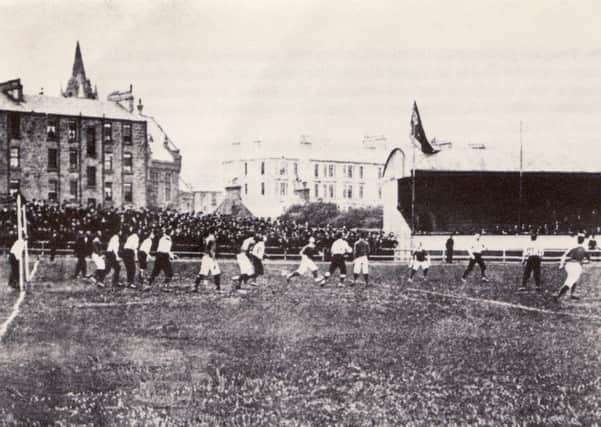

FROM Neil McCallum’s 10th minute opener in the first ever meeting of the teams on 28 May 1888 to Tom Rogic’s penalty blazed over the Hampden crossbar on 17 April 2016, it has become a football rivalry like no other.
Love it or loathe it, very few feel ambivalence towards the fixture which will return to the Scottish football calendar on a regular basis in the new season after an interregnum of four years.
Advertisement
Hide AdAdvertisement
Hide AdThe re-engagement of a dominant Celtic, on a run of five consecutive league titles, with a regenerated Rangers emerging from their financial collapse of 2012 will unquestionably be the headline act of a domestic campaign which is being more widely and keenly anticipated than any in recent memory.
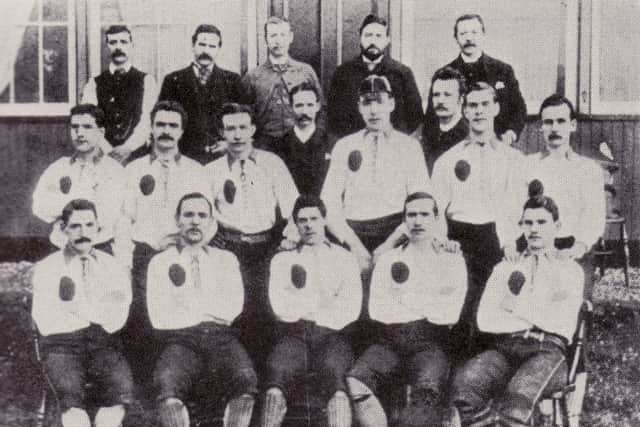

For major broadcast partner Sky Sports, main sponsor Ladbrokes and a host of other commercially interested parties, Scottish football suddenly has added value once again with the return of the ‘Old Firm’.
It is difficult to trace exactly when that sobriquet, which some Celtic supporters have vociferously sought to distance their club from, was first attached to one of world football’s most famous derbies.
The first recorded usage, however, is generally credited to a cartoon which appeared in the popular Scottish Referee sports periodical ahead of the 1904 Scottish Cup final between the clubs.
It depicted a pipe-smoking human sandwich board, bearing the message ‘Patronise The Old Firm’ in a reference to the ever more regular and increasingly lucrative meetings of Celtic and Rangers at the time.
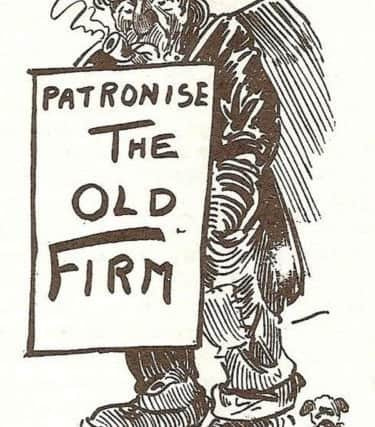

A then record attendance of 64,472 at the match – a Scottish Cup classic which saw Jimmy Quinn’s hat-trick win it 3-2 for Celtic after Finlay Speedie’s double had put Rangers 2-0 ahead – was testament to the burgeoning appeal of the fixture.
But, in common with much of the media at the time, the Scottish Referee cartoon was not intended to be complimentary. It was a dig at professionalism in football, which had finally been authorised by a previously reluctant Scottish Football Association in 1893 and which retained its critics for some time.
The religious division which would eventually come to define the Old Firm was not the most significant factor at this stage. Rather, the pulling power of both clubs came at the expense of other early pioneers of Scottish football who prized their amateur status and Corinthian principles.
Advertisement
Hide AdAdvertisement
Hide AdChief among them were Queen’s Park, the founding fathers of the game in Scotland, and the prominent Dunbartonshire trio of Vale of Leven, Renton and Dumbarton who dominated the opening chapter of the sport’s history in this country.
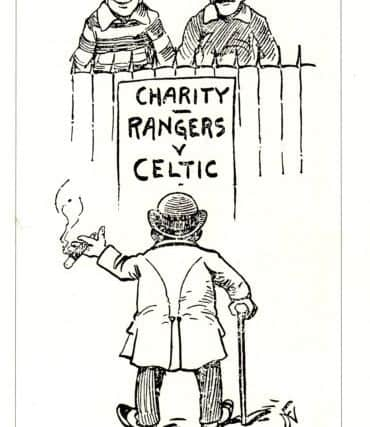

Rangers, contrary to the idle analysis repeated in so many accounts of their history, were formed in 1872 purely on the same wave of athletic enthusiasm for football which had brought those other clubs into existence.
It would be almost 20 years before they claimed their first major honour, sharing the inaugural Scottish League title with Dumbarton in 1891, and fully embraced the professional game to become the pre-eminent force of the late Victorian and early Edwardian era.
Celtic, founded 15 years later than Rangers in 1887, were much quicker in establishing themselves as a powerhouse of Scottish football.
The raison d’etre for the club was to help alleviate poverty among the impoverished and frequently persecuted Irish community in Glasgow’s east end. This admirable charitable aim was soon married with a fierce level of competitive ambition which saw them land their first major honour just five years after being established by Marist Brother Walfrid.
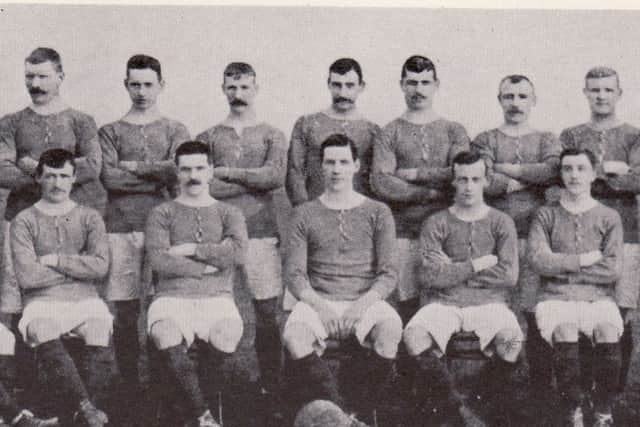

The resonance of Celtic’s first-ever match, which saw McCallum score that maiden goal in May 1888, could certainly not have been appreciated by any of the 2,000 spectators who witnessed the 5-2 victory over a Rangers side happy to provide the opposition for the inaugural fixture at the first Celtic Park.
Players and officials of both clubs gathered for a post-match function at St Mary’s Hall in the nearby Calton area, the social gathering reportedly carried out with the kind of warm relations which were maintained between them for much of their early mutual history.
While Celtic were an Irish Catholic club in identity, following the lead of Edinburgh Hibernian and Dundee Harp at the time, it would not extend to a signing policy. Proposals from members in 1895 and 1897 to restrict the number of Protestants in the team, or even comprise a solely Catholic line-up, were firmly and laudably rejected by the club’s committee.
Advertisement
Hide AdAdvertisement
Hide AdRangers’ own progression to becoming a clear extension of the city’s Protestant population gathered pace in tandem with Celtic’s rapid emergence as one of the most successful clubs in the country.
In the immediate aftermath of that 1904 Scottish Cup final which heralded the ‘Old Firm’ monicker, Celtic under their formidable manager Willie Maley enjoyed their first great period of glorious domination as they reeled off a then record six consecutive league titles.
By the time the Harland and Wolff shipyard from Belfast established its premises in Govan in 1912, bringing with it an influx of Protestant workers, the die was firmly cast for Rangers as a symbol of Unionism and Loyalism.


So too was the unspoken but undeniable introduction of a sectarian signing policy which would largely preclude Catholics playing for Rangers until the high-profile recruitment of Maurice Johnston in 1989.
However questionable the ethics at play, there is also no doubt that the clear dividing lines which were established in the cultural identities of the clubs helped fuel the almost insatiable appetite among supporters for each instalment of their increasingly dramatic and often combustible on-field showdowns.
The 1909 Scottish Cup final illustrated that the willingness of the punters to divert their cash to the Old Firm did have its limits, however. After a 2-2 draw, the replay at Hampden finished 1-1. Incensed by the prospect of a second replay amid claims the clubs were manipulating results to increase revenue, fans of both united in a pitch invasion and riot which saw goalposts torn down, pitch ripped up, wooden pay-boxes set alight and police and fire crews attacked.
The trophy was withheld and both clubs were fined by the SFA. The Old Firm were now united in notoriety as well as pre-eminence in Scottish football. The story of a unique sporting rivalry was only just beginning.
Extract from The Scotsman’s report of Celtic’s victory on 18 April
Advertisement
Hide AdAdvertisement
Hide AdNever in the history of the Association game in Scotland have two clubs attracted such a crowd as that which witnessed the 32nd final for possession of the Scottish Cup, played on Saturday on the Queen’s Park ground at New Hampden, Glasgow, between the Celtic and Rangers.
The Scottish Association officials departed from the usual admission charge of a shilling and fixed it at the popular sixpence. It was truly a red letter day for Scottish Association football, for even the most ardent official never cherished the idea that a crowd of such dimensions would have flocked to the game.
Smith broke away for Rangers and after giving Young and McLeod the slip, he shot across the goal, where Speedie, from a good position, headed into the custodian’s hands. Adams clutched the ball, but being apparently excited, he let it drop at his feet and fall into the net, thus giving his opponents a goal.
Smith, on the left wing, was again prominent, and in another run by him he forced McLeod to concede a corner. This was well taken and as the ball sped goalwards the players clustered in front of the custodian. The ball, however, fell at the feet of Speedie, who banged it into the net, amid much enthusiasm.
Though two goals down, the Parkhead eleven were playing the better game, and when at length Quinn ran in and scored a cleverly taken goal, they only got their just reward.
Towards the interval, Muir centred with fine judgment. Quinn met the ball, and sent it past Watson for the second time. This, the equalising goal, was greeted with great cheering.
There was then keen excitement as Quinn sped on, with the Rangers backs running close on him, and endeavouring to charge him off. He, however, clung to the ball till within an arm’s length of Watson, when he softly tipped it into the net for the third time. The supporters of the Parkhead side cheered lustily, and the Celtic players themselves, having got the lead, gave many signs of their delight.